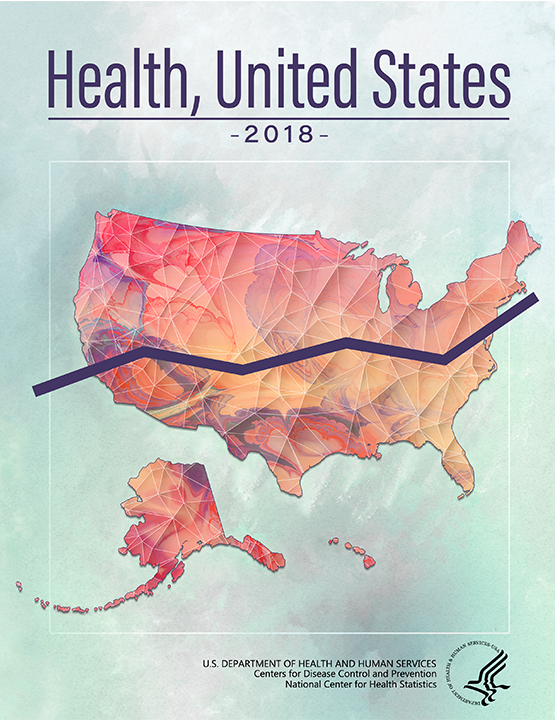NCHS Releases Health, United States: 2018
Posted on byNational fertility rates have been declining steadily for over a decade, and life expectancy at birth has also declined in recent years, according to the latest annual report on the nation’s health, released today by CDC’s National Center for Health Statistics.
The report, “Health, United States: 2018” features charts and online tables of health-related data on a wide range of topics, including health care, immunization, and health behaviors, providing a comprehensive snapshot of the nation’s health:
- Fertility rates (the number of live births per 1,000 females ages 15-44) have fallen 10 out of the last 11 years in the United States.
- The birth rate among teenagers ages 15–19 years fell by more than one-half, from 41.5 in 2007 to 18.8 live births per 1,000 teens in 2017—a record low for the United States. 2018 data indicate that this trend has continued.
- The infant mortality rate in the United States dropped in 2017, from 5.9 infant deaths per 1,000 live births in 2015 and 2016 to 5.8 in 2017. The infant mortality rate in the U.S. has declined by more than five-fold since 1950.
- From 2007 to 2018 (preliminary estimates), the percentage of children under 18 years with no health insurance decreased 3.8 percentage points to 5.2%.
- In 2017, fewer than half (48.5%) of uninsured children ages 19–35 months had received the recommended combined 7-vaccine series. This was significantly lower than among the percentage of children who were covered by private health insurance (76.0%) or Medicaid (66.5%).
- The use of e-cigarettes among students in grades 9–12 increased from 1.5% in 2011 to 20.8% in 2018, nearly doubling (from 11.7% in 2017) in the last year alone.
- In 2017, 16.2% of adults living below 100% of the poverty level delayed or did not receive needed medical care due to cost compared with 5.1% of those living at or above 400% of the poverty level.
- The percentage of Americans taking 5 or more prescription drugs in the past 30 days increased from 6.5% in 1999–2000 to 10% in 2003–2004, and then was stable through 2015–2016 (11%).¹
- In 2017, personal health care expenditures in the United States totaled almost $3.0 trillion—a 3.8% increase from 2016. • From 2007 to 2017, the death rate from drug overdoses increased 82%, from 11.9 to 21.7 deaths per 100,000.¹
- From 2007 to 2017, the suicide rate for children ages 10–14 increased from 0.9 to 2.5 deaths per 100,000 resident population. From 2007 to 2017, the suicide rate increased 24%, from 11.3 to 14.0 deaths per 100,000 resident population.¹
- Life expectancy at birth in the U.S., after increasing or remaining the same in every year between 1994 and 2014, has declined in two of the past three years. Significant decreases in life expectancy have been observed each year since 2015 among men, while remaining stable among women.
¹Rates are adjusted for age.
Posted on by
Categories Uncategorized
Page last reviewed: October 30, 2019
Page last updated: October 30, 2019
Content source:
CDC, National Center for Health Statistics


